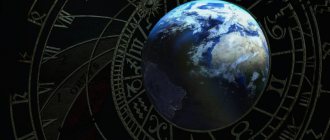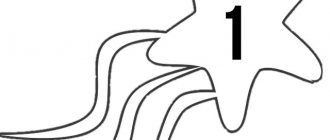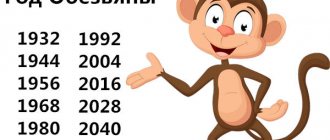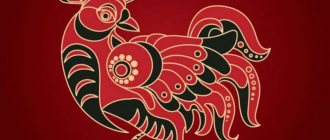Since ancient times, the camel has been considered a symbol of Asia and the Middle East; it was most strongly associated with Arabia. Thanks to its ability to move heavy loads for many kilometers, to endure thirst, heat and hunger without complaint, this beast of burden quickly became a symbol of hard work, determination, humility, repentance, and self-esteem.
In Arab countries, since ancient times it has personified nobility and royalty. The Prophet Muhammad was often called the “camel prophet” or “the camel keeper of Mecca,” and his two favorite camels received special honors after death: the fastest camel, al Adha, moved to heaven, and al Kasawa was buried near the holy Kaaba in Mecca.
Camel on an ancient Roman mosaic in the city of Petra. For the ancient Romans, the camel was a symbol of Arabia.
Prophet Muhammad riding a camel and Prophet Issa (Jesus Christ) riding a donkey. Medieval Persian miniature. Muhammad is shown riding his fastest camel, Al Adha, which he took with him to heaven
The camel was also a symbol of arrogance and arrogance. Some Hebrew sources report that the serpent that tempted Eve in Paradise had the head of a camel. This creature is also called the "winged camel". According to another version, a serpent with a camel's head was an attribute of the demon Samuel, and it was on it that the demon flew to heaven to seduce Eve.
In Christianity, the camel immediately became a symbol of hard work and resigned submission to God's will. Thus, John the Baptist, while in the desert, wore a hair shirt made of coarse camel hair instead of clothing - this was his severe asceticism. To explain how difficult it is for a rich person to lead a righteous life and earn the Kingdom of God with his deeds and thoughts, Jesus Christ used the analogy: “It is easier for a camel to go through the eye of a needle than for a rich man to enter the Kingdom of God.”
The camel on the coat of arms of the city of Baku symbolizes the role of caravan trade in the development of the city
Coat of arms of Eritrea. The camel is the national symbol of this young state
The Iranian prophet and founder of the new religion, Zarathushtra, was called “master of the old camel” - this was his “external” name, designed to protect him from evil spirits. In the 19th century German philosopher Friedrich Nietzsche, in his famous book “Thus Spake Zarathustra,” used the image of a camel as a symbol of an enslaved, overloaded with cultural models of the “hardy spirit”, incapable of free creativity. However, the camel then turns into a lion, which will abandon old values to create new ones of its own. The next stage of symbolic transformation is the child who, in his innocence, transforms creativity into sacred play.
Adoration of the Magi
The camel is a Christmas emblem. Three magicians - Caspar, Balthazar and Melchior - followed the Christmas star and arrived in Bethlehem. There, in the stable, they found the newly born Jesus Christ with his mother. The Magi presented him with gifts - gold, incense and myrrh. Gold, the most precious of all metals, is presented to Jesus as the King of the entire human race, frankincense (translated as white), precious resin - as a high priest and teacher, and myrrh, a substance capable of resisting decay - as a person who will conquer death by death .
Three wise men on the way. Painting by the French artist J. Tissot, 19th century.
Totem in astrology
Followers of Zoroastrianism used their own calendar, which was based on the cycle of rotation of the planet Saturn around the Sun. It is 32 years, each of which corresponds to a totem animal. The sixteenth year of the cycle according to the Zoroastrian horoscope passes under the sign of the camel (dates: 1921, 1953, 1985, 2022, 2049). Follows the Year of the Badger and precedes the Year of the Hedgehog. The totem tells a person what qualities he needs to have, what path to follow in order to achieve grace and the protection of higher powers.
The color of the year is red, its divine patron is Rashnu, the god of righteousness, judge in the afterlife. This means that the year of the Camel will be associated with the restoration of justice, balance, and making correct and fair decisions. This period is characterized by the end of conflicts. Herbivorous totems will have to work hard, but their efforts will eventually be rewarded.
In the zodiac horoscope, the camel is the patron and totem of the zodiac sign Aquarius. A talisman in the form of this animal is recommended primarily for men, who are given perseverance and the ability to achieve their goals.
Constellation Camel (Giraffe)
The modern constellation Giraffe bore a different name for a long time. Initially, it was called the Camel, in honor of the meeting of Rebekah and Isaac at the well, at the watering place of these animals. Only in 1624 did the astronomer J. Bartsch finally assign the name Giraffe to this cluster of stars. Confusion also arose due to the fact that Europeans did not always clearly distinguish between these two exotic animals. In addition, from Latin the word giraffe (Camelopardalis) can be roughly translated as “spotted camel.”
Rebekah and Isaac at the well. Medieval miniature
Constellation Camel (Giraffe). Illustration from the astronomical atlas “Uranography” by J. Hevelius
Share link
Manifestation of totem in mythology and religion
This animal is very popular in mythological stories and beliefs of Eastern countries, where it has been tamed and domesticated since ancient times. Among the Arabs, the camel symbolizes dignity and independence, power and endurance. It is interesting that among Europeans who did not use camel labor, it did not evoke such a respectful attitude.
Eastern peoples endowed camels with heavenly patrons. For example, among the Arabs, Nahi took care of the welfare of animals, among the Kazakhs, Oysyl-kara, and among the Uzbeks, Sultan-bobo. Also, camels in mythological stories themselves act as magical creatures and faithfully serve the heroes: thus, the hero Manas from the national Kyrgyz epic is accompanied by the camel Jelmayan.
It is also a revered animal in Islam: the Prophet Muhammad rode it. The Bedouins have a legend according to which Allah, when creating man, dropped a lump of clay, and a camel emerged from it. Another legend says that only this animal knows the hundredth name of Allah, which he told him in gratitude for his salvation from his enemies. That is why the camel often takes on such a proud look.
Zarathushtra, the founder of Zoroastrianism, the oldest religion in the world, bore the middle name “master of the old camel.” This name protected him from evil thoughts and ill-wishers.
In the Christian religion it is a symbol of moderation and abstinence, hard work and submission. Coarse clothes made of camel hair were worn by hermits, including John the Baptist. It is no coincidence that the image of an animal appears in the speech of Jesus Christ: “It is easier for a camel to go through the eye of a needle than for a rich man to enter the Kingdom of God.” It is considered one of the emblems of Christmas: with its help, the Magi came to Bethlehem to worship and bring gifts to the born Jesus Christ.
Antitotem
The anti-totemic animal is the hyena. This animal leads an idle lifestyle, is distinguished by its corpulence and selfish interest in others, and often forgets about people who once did good to it. A camel should avoid people who do nothing for nothing and do not have curiosity and sustained interest in the world around them. Hyenas are usually short in stature, they are very greedy, demanding of others, and envious. Often they do not like people who are not greedy and like to spend their last money on travel or who may decide to work in a distant country. It is better for Camels not to communicate with them.
The meaning of tattoos for men
For men, the image of a camel, which has enormous potential, signifies the ability to overcome difficulties with dignity and not turn back on the path to success. The bearer of the tattoo is distinguished by a purposeful and strong character, he has a good idea of what he strives for and what he wants from life.
Those who do not like excessive attention prefer to apply small tattoos in the form of a dark silhouette of a camel. Laconic tiny images look original on wrists, fingers or even toes. Men with such tattoos are distinguished by their prudence, moderation in spending and the ability to economically manage any resources.
An expressive tattoo in the form of a camel’s head, made in a realistic style, is a sign of the complex nature of the wearer. The image of an animal’s imperturbable face, looking at the world with icy calm, means that the disposition of the owner of the tattoo is arrogant and arrogant. Such men do not listen to the opinions of others, do not know how to sympathize and feel sorry, but they treat others fairly, objectively assessing other people’s actions and words.
Camel as a symbol
In the Middle Ages, a camel, able to recognize how strong a burden is, became a symbol of the ability to evaluate and rationally manage one’s strength. In Asian countries they said about the animal: “Even the weakest camel will carry away the loads of several donkeys,” admiring its abilities.
For those who could not comprehend the complex character of the camel, it personified rage and disobedience, selfishness, and insensitivity. A wayward animal would fly into a rage and could attack a person who did something objectionable. In many countries, a camel is a symbol of pride and vanity, since the arrogant expression of its muzzle does not change, even when a rider sits on its back. People believed that the animal did not even notice the person trying to lead and impose his will.
In Christianity, the camel was called a symbol of abstinence and humility for its ability to go without water and food for a long time, tirelessly endure heavy loads, and obediently bend over before a person to load. The animal's head held high was compared to royal dignity and vitality.
Camel Woman
A woman of this sign is patient, hardworking, and with her liveliness and sociability she is able to conquer men’s hearts. She starts working early, can travel often and get an education away from her main place of residence, but at the same time her personal life is not in the best way. In her youth, she often becomes a victim of deception and betrayal from men, and only in her mature years does she find female happiness and start a family. A woman with this sign is able to give her children a lot; she will not impose her opinion on them or dictate conditions, but at the same time they listen to her and follow her advice and words.
Camel
Camel: Zoroastrian horoscope. The highest embodiment of moderation and sobriety. This is a year of work and worries for everyone whose totems are herbivores. Their diligence will be rewarded. At first glance, the Camel is unlikely to seem likeable - he is harsh in language, ironic, behaves condescendingly and does not consider it necessary to soften his harsh statements. But it’s worth understanding such a person better; he is much more serious than he might seem, he is very kind towards others, and, although he looks down on people, he easily forgives their shortcomings. The Camel expresses its sympathy for humans with especially caustic ridicule and poisonous irony. The camel prefers to go through life lightly, without acquiring a large number of things or, indeed, material goods. He knows his worth and is not going to fill it with expensive trinkets or high titles. Possessing only the bare necessities, the Camel has enough; he has no need to ask for favors or live at someone else's expense. Moreover, the Camel is always ready to share its meager reserves with those who need it. He uses energy wisely, so he moves towards the goal, albeit slowly, but steadily; There is little that can lead him astray.
To those whom the Camel loves, no matter how ironic and funny he may be, he is very kind and attentive. He turns a blind eye to their shortcomings and weaknesses and willingly helps them overcome life’s troubles and adversities. The Camel's strength and endurance are enough for several people, and he readily gives his back to those who need it. The camel does not like to show his feelings, so he seems cold-blooded, arrogant and selfish. He controls not only his behavior, but also his emotions themselves, not allowing himself to get carried away by those who are not worthy of it, or worry about problems that are not worth attention.
Camel totem . A man of action who does not like to waste time talking. The sacred animal of this year suggests in a person a certain asceticism and endurance, the ability to be content with little. What he has, he uses wisely. The camel never hides his attitude towards people, he is quite harsh and distrustful, he always expects the worst, which is why he spits. At the same time, he knows his own worth and achieves everything on his own. He also shows himself interestingly in romantic relationships; the more he likes a person, the more the Camel will ridicule him. In fact, he is ready to forgive his loved ones, his wife and children, a lot. He tries to teach the latter to be independent as early as possible.
The antitotem of the Camel is the Hyena, which is alien to healthy cynicism, but is characterized by sweetness and a desire to have fun. A camel under the power of an antitotem is delicate and weak. He has no control over his feelings, exaggerates the significance of everything that happens, and behaves simply unreasonably. A life that is not rich in joys and pleasures does not suit him, so such a Camel quickly spends everything he has, and then is forced to seek help.
- Find out your sign by year of birth
- Badger
V.N. Tatishchev: dog or camel
The history of the coat of arms of Chelyabinsk and the region began back in 1737, when the outstanding statesman and historian V.N. Tatishchev designed and presented two coats of arms for the Iset province (modern Chelyabinsk region ). In general, the projects were similar, with the exception of the animal depicted - one depicted a dog chained to the wall of a fortress, and the second depicted a camel tied to a pin.
Coat of arms of Chelyabinsk 1782
However, the first official coat of arms of the Chelyabinsk region was adopted only in 1782 and was compiled by A.O. Volkov - State Councilor. For his version of the coat of arms, the adviser chose two animals - a marten, as the main element of the Ufa coat of arms ( Chelyabinsk at that time was part of the Ufa district ) and a loaded desert inhabitant. According to the author, the camel emphasized the commercial importance of the city. the Southern Urals began .
Badge in the form of the Soviet coat of arms of Chelyabinsk
Subsequently, the coat of arms underwent some changes, and during the Soviet period it lost a key character - it was replaced with a steel ladle, a tractor and an open book.
Modern coat of arms of Chelyabinsk
The camel returned to the Chelyabinsk coat of arms only in the early 2000s - the historical one, albeit slightly changed, was returned to replace the Soviet key characters.
Thus, for the symbol of the city we must thank Tatishchev and Volkov , who decided to immortalize the camel. But why this particular animal came to mind is another question.
Camel general meaning
The most ancient images of camels are considered to be rock paintings in Kapova Cave (Bashkortostan, Russia). The approximate age of the found drawings is 15-20 thousand years BC; scientists believe that people tamed powerful animals 2000 years BC. Hardy camels were used to transport goods and riders, and in armies their unusual appearance instilled fear in the enemy.
In Russia, a breed of one-humped camels (Arvana) and three types of two-humped camels were bred - Mongolian, Kalmyk and Kazakh. People ate camel meat, and made butter, cheese and healthy fermented milk drinks from the milk. Animal wool is highly valued for its medicinal properties; since ancient times, products made from it not only warmed, but also alleviated the condition of people with sore joints.
Camels have excellent vision - they can see a moving object several kilometers away. Animals' sense of smell is no less acute; they can sense the smell of moisture and fresh grass 50 km away, and by the movement of thunderclouds they can guess the place where it will soon rain and rush there. Camels are skilled swimmers and hardy travelers; they do not sweat and tolerate heat well, surviving without water for about 2 weeks, and without food for up to a month.
Totem
A representative of the totem should not try to limit his passion for understanding the world to travel. Any thing purchased away from home can become his talisman. The talisman of such a person becomes an image of a camel, an unusual thing or decoration that he will pay attention to abroad or while traveling. An ideal talisman could be a foreign coin or a pendant made of a stone corresponding to the zodiac sign of this person. As a talisman, you can use a tin box of tea or coffee purchased in the land of your dreams or a scarf with hieroglyphs or embroidery.
Interpretation of popular beliefs associated with the cult of the camel in Uzbek folklore
Bibliographic description:
Uraeva, D. S. Interpretation of folk beliefs associated with the cult of the camel in Uzbek folklore / D. S. Uraeva.
— Text: immediate // Philology and linguistics: problems and prospects: materials of the II International. scientific conf. (Chelyabinsk, April 2013). - T. 0. - Chelyabinsk: Two Komsomol members, 2013. - P. 16-18. — URL: https://moluch.ru/conf/phil/archive/79/3734/ (access date: 03/06/2022). In the center of Bukhara, near the Varakhsha hotel, there is a monument to a winged camel. Every tourist visiting the city looks at it with interest and takes photographs. Because the most ancient beliefs of our ancestors associated with the cult of the camel are associated with it. Especially among the nomadic population, there is a widespread attitude towards the camel as a kind and helping spirit. Indeed, traces of the belief associated with the camel as a kind and helping spirit are still preserved in some customs. For example, one of these customs is that if a pregnant woman cannot give birth on time (that is, she carries a child in her stomach for more than nine months), a camel’s hair is burned over her or she jumps over a camel’s hair.
There is another popular belief: if a woman, during pregnancy, unknowingly eats camel meat alone, without her husband, then she will not be able to give birth on time (at nine months), but will give birth later (at eleven months).
Based on the beliefs of ancient man, a second life was given to the following animals: horse, dog, bear, bull, cow, camel, ram among other animals [8, p. 152]. Therefore, there is a belief that these animals can accompany a person to the other world and help him there. With this totemic understanding, in ancient times the dead were buried along with the animal that that person considered to be his totem during life. During the funeral, the dead body was laid on the skin of the animal. Especially in Central Asia, before the advent of the custom of burying the dead in the ground, there was a ritual of leaving a dead body on the skin of a bull or camel in open areas, in deserts and caves [9, p. 494; 3, p. 210–211]. The purpose of this leather covering of the animal was to protect and prevent wild animals and birds from scattering the bones of the dead.
It is interesting that in the Uzbek folk epic “Kuntugmish” there is such a motif associated with this ancient belief. In this motif, the main characters of the epic are sentenced to death and, in connection with this, they are placed in a camel skin bag. First, the ruler of Zangara Buvrahon consults with his subordinates and gives the order to kill Kuntugmish and Kholbeki. Then they slaughtered one camel and wrapped the two culprits tightly in its skin. Then this leather bag was tied to the tail of a wild horse and driven into the hot desert. The hairs of the horse's tail fell off one by one, and on the sixth day the leather bag gave away. The raw skin dried out in the sun and it squeezed the accusers tightly and rigidly like iron. Finally, a sparrow flew from the mountain and, pecking, made a hole in the leather cover. Kuntugmish, together with Kholbeka, widened this hole with their hands and easily climbed out.
Customs and rites of origin in connection with the views of the people about the connection between the body of the totem-animal and the spirit have changed over time, but their interpretations are preserved in works of art. It can be said that in laments and funeral songs associated with Uzbek funeral rites, the image of a white camel is often found in the artistic symbol of the origin of death:
You're sitting in my yard
Like a white camel?
And my tears flow from my eyes
Like holy water Obilaison [2, p. 112].
In the plot of Uzbek toponymic legends you can also find the image of a white camel. In it, too, this image is interpreted as a symbol of death and dead spirits. For example, in the legend “The Camel of Baba Kambar” the camel becomes a stone and does not allow the enemy to enter. And so he protects the people [5, p. 53]. In the legend “The Road of the White Camel,” a white camel opens the road of water for people [5, p. 102]. The legends “Babai Kabir” and “Grandma Zubeida’s Cemetery” tell how these cemeteries appeared. According to legend, one white camel sat in these places, after which the bodies of saints were buried here and a cemetery was located here. It should be noted that among the people the camel is considered as a spirit, a symbol of death, therefore in folk legends there is an interpretation of it associated with the appearance of cemeteries and places of light, places of pilgrimage.
The place and role of the camel in the social life of people is the basis for the fact that it is considered not only as a helping force. In ancient times, in the everyday life of the nomadic population, the camel served as the main means of transport. Especially in deserts, this animal with its qualities such as tolerance to water, courage and strength was the main helper of man. Trade was carried out with the help of camel caravans. His meat and milk were the main healthy food, and also, his work was very highly effective for people. Therefore, people loved and cared for the camel. One can even say that in connection with this, the camel symbol began to appear in Uzbek folklore as one of the cult zoomorphic images.
First, you can consider the following lines in Uzbek folk songs that depict the camel’s place in the family as a bearer of gravity. Especially when carrying weights, people used male camels. Because there are both male camels (called “nor”) and female camels (called “biya”). They were called by names based on their gender. There is a hint of this in Uzbek folk songs:
Not every camel can be called a “nar”,
If there are no two batman (tone) loads above it.
And you can also find lines in folk songs that talk about cargo-carrying camel caravans:
If you are with a courageous person,
He will bring you a whole caravan of camels with jewelry.
And also in Uzbek folk songs there are lines about the participation of a camel in various folk entertaining sports games. It is known that “ulok” is a horse competition, usually held with horses. But sometimes such sports competitions were also held with camels. Especially when the prize of such competitions was a camel or a camel with its baby, they were carried out very vigorously.
Even among the nomadic population, instead of bride price, they took a camel for girls. It is as if they were exchanging the spirit of a man for the spirit of a camel. There are song lines that express this idea:
“Will your father give you to me if I give him a camel?”
Will your father give you to me if I create a mountain of everything I’ve earned?
This means that in the riddle about the camel “Tall, tall girl, tall girl” [4, p. 49] it is not easy to choose the image of a girl as a hidden metaphor for the image of a camel. There is no doubt that this became the vital foundation for the custom of the people to give a camel instead of a bride price for girls among the nomadic population.
Among animals, the camel is very devoted and loving to its child. Even he carries his child in his belly for almost exactly a year before birth. This real fact is depicted in both oral and written literary works. For example, his devotion is clearly expressed in the dastan “Alpamysh” in the image of Koranor. It is known that Alpamysh will return to his homeland after seven years of separation. Then only the camel Koranor immediately recognizes him and gets up from his place. Before this, he had not gotten up from his seat for seven whole years. Seeing Alpamysh, Koranor became very worried and shouted. In the fable “The Camel and His Child” by Gulhaniya, the love of a camel’s mother for her child is also very touchingly expressed.
Especially, it is difficult to endure the cry of grief of a camel that has lost its child. Therefore, in folk songs, the state of deeply grieving and crying people is compared to the state of a camel mother who lost her baby.
When it gets dark I would look into the distance,
And I would cry like a camel that has lost its child.
Camels that have lost a child are pale as calico,
If you love with all your soul, then your beloved will be beautiful.
The presence of such similar signs in the psychological state of a camel and a person gradually began to be used as parallel images in folklore. And so one of them was used instead of the second as a metaphor or symbol. Therefore, in folk songs and riddles, a man and a camel can be seen as parallel images. It should be noted that the camel in reality is very modest and patient. This makes him different from other pets. With such characteristics, he plays the role of a comparative image of people with the same properties and qualities, such as hardworking and modest. For example, in Uzbek folklore there is a saying: “If the wind carries away a camel, then you will see a goat in the sky.”
And also, among people there are nicknames associated with the name of the camel. For example, in the historical folk dastan “The Rebellion of Jizzakh”, it tells about a character named Khusan the camel.
The camel symbol is also used in the image of old elderly people, being a symbol of either old women or old men:
The camel lies on the ground
With a bell around his neck.
If you ask a girl,
Then she is in the arms of a seventy-year-old man.
In this song, the image of a camel is interpreted as a parallel image of a seventy-year-old man. And in this Uzbek folk riddle below, the camel secretly depicts the symbol of the old woman: “My grandmother goes, but her cakes remain” [4, p. 50]. The answer to this riddle is a camel. Here the camel symbol does not simply serve as a metaphor for the image of the grandmother. The most ancient mythological ideas and views associated with the beliefs of the cult of the grandmother became the foundation and considered her spirit in the form of a woman to be kind, helping people. Because among the people such helping, kind spirits are called “grandmothers” or “grandfathers”. Especially, about such grandmothers they say: “grandmother is like a ghost”, “grandmother is almost a spirit”, “grandmother is in the graves” [10, p. 101]. There is a belief among the people that the grandmother is a good spirit or the ghost of a female generation that has passed away. She is the cult of the grandmother [6, p. 101–102].
Among the people there is a belief associated with sleep. If a person dreams of a camel, usually people interpret it as a sign from spirits or grandmothers. For example, in the dastan “Alpamysh” one of the main characters, Barchina, sees a drunken camel in a dream:
“If I, a drunken camel, walk with dragons,
Don't speak badly, speak well, concubines [1, p. 99].
This dream of Barchina was interpreted by her assistant Suksura and she associated the camel symbol with the name of the cult of holy women in Islam:
If a drunken camel walks with a dragon,
Thirty-three thousand pilgrims in Madina,
The names are Fatima, Zuhra, servants of the universe [1, p. 100].
And also, people treating badik (one of the allergic diseases) believe that the camel is a liberating guardian of the human body and spirit from various damages and evil spirits. They consider the camel to be one of the objects that takes on human illnesses. The song associated with this custom talks about the treatment of badik:
Well, go ahead and sit on the camel,
If you need milk, then go to the biy.
But among the people there is a dualistic attitude towards the symbol of the grandmother. It is impossible to deny that there are both good and bad aspects of it. This is fully emphasized by the names of diseases that are named in connection with them. Diseases that are associated with allergic diseases of the body such as rubella (red grandmother), chickenpox (black grandmother). Then the grandmother symbol is depicted as an evil, ruthless spirit infecting a person. Therefore, during the treatment of such diseases, they sang songs about the camel and its name was associated with the name of the diseases:
If you are a camel, give in
If you are a horse, give in
Here the expression “camel-badik” denotes the type of disease. Because people consider badik to be an evil spirit entering the human body [7, p.].
Views associated with the cult of the camel led to a metaphorical, hidden name for this animal and a taboo approach. This influenced the appearance of many riddles about the camel. Riddles usually hint at the special formal features of a camel. For example: “He’s big, but his tail is short.”
In some riddles, the image of a camel helps to reveal the name of the hidden thing and find the answer to the riddle. Then he is the most special point of the riddle: “My black camel is noisy, his bones are boiling.” The answer to this riddle is the gun's bullet. In the riddle, the image of a weapon bullet is not easily juxtaposed with the image of a black camel. There are two bases for this. The first is that the voice of the weapon, like the voice of a black camel, is very loud and scary. The second is that a weapon bullet brings death to a person. As mentioned above, the image of a camel is also associated with the concept of death. In this riddle, through the signs and properties of the camel, a hint is conveyed about the name of the bullet, a weapon that is close to it.
In conclusion, we can say that the image of a camel is found in Uzbek folklore in all genres. Based on these examples, it must be emphasized that the camel is one of the traditional zoomorphic images in Uzbek oral literature. Especially, the image of a camel is often used as a zoomorphic parallel to the image of a grandmother.
Literature:
- Alpomysh. Uzbek heroic epic. - T.: Shark, 1998. - 400 p.
- Ghazals flowing from lamentations. Uzbek laments and funeral songs. Collected and published by: O. Safarov and D. Uraeva. - Bukhara, 2004. - 125 p.
- Dumezil J. Scythians and maps. - M.: Nauka, 1990. - P.187–216.
- Puzzles. Uzbek folk art. Compiled and published by Z. Khusainov. - T.: Publishing House of Literature and Arts named after G. Gulyam, 1981. - 368 p.
- Legends from the Great Silk Road. (Legends associated with the names of places). Compiled by M. Zhuraev. - T.: Fan, 1993. - 102 p.
- Murodov O. Shamanic ritual folklore among the Tajiks of the middle part of the Zeravshan valley // Pre-Muslim beliefs and rituals in Central Asia. - M.: Nauka, 1975. - 340 p.
- Sarimsokov B. Uzbek ritual folklore. T.: Fan, 1986. - 216 p.
- Spevakovsky A. B. Spirits, werewolves, demons and deities of the Ainu. - L.: Nauka, 1988. - 205 p.
- Strabo. Geography. M.-L., 1964. - P.494.
- Sukhareva O. A. Remnants of demonology and shamanism among the lowland Tajiks // Pre-Muslim beliefs and rituals in Central Asia. - M.: Nauka, 1975. - P. 101.











